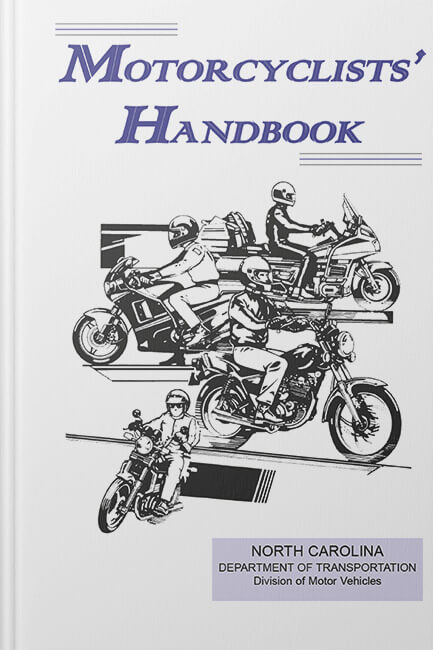North Carolina Motorcycle Manual Driver's Manual
To make studying easier, the North Carolina DMV handbook 2025 edition is available in multiple languages and comes with an audio version. Get interactive support with our AI assistant to clarify any complex terms.
North Carolina Motorcycle Manual Online 2025
For novice and experienced riders alike, the North Carolina Division of Motor Vehicles (DMV) knows that learning is an ongoing process.
No matter how much you need to know, or think you already know, the North Carolina Motorcyclists Manual contains important information on traffic regulations and safe riding practices. It’s an indispensable resource for any responsible motorcyclist.
Getting your license
Traffic law in the state of North Carolina requires anyone wishing to operate a motorcycle to have the appropriate motorcycle endorsement on their driver’s license. In order to get this endorsement, an applicant will need to take a knowledge test as well as a practical, off-street skills test.
Before taking the practical test, prospective motorcyclists may choose to apply for a motorcycle learner permit. In order to qualify for the learner permit, individuals will need to successfully complete the knowledge, road sign identification and vision tests.
Necessary Gear
Before heading out on a trip, responsible riders ensure that they have the appropriate gear. Purchasing quality gear can be a significant investment, but one that is certainly worthwhile. Statistics reflect that motorcyclists have a much better chance of avoiding significant injury if they’ve got a DOT-approved helmet, face and/or eye protection and protective clothing.
Many crashes occur on short trips, when motorcyclists are traveling slower than 30 mph. No matter what speed, riders wearing helmets are three times as likely to survive head injuries as those who don’t have helmets at the time of the crash.
Being a responsible rider
According to the NC Motorcycle Manual, responsible riders are defensive drivers who look out for potential hazards before they become a serious issue. Other tips for being a responsible, safe rider include:
- Visibility – Riders should wear proper clothing, use their headlights, ride in the best lane position to see other vehicles and be seen by other drivers.
- Communication – Riders should communicate their intentions to other drivers by using signals, brake lights and lane position.
- Distance – Riders should maintain an adequate space cushion while following, being followed, sharing a lane, passing and being passed.
- Scanning – Riders should scan their path of travel at least 12 seconds ahead.
- Analysis – Riders should be able to identify and separate multiple hazards rapidly.
- Preparation – Riders should be prepared to act, always remain alert of road conditions and knowledgeable of proper crash-avoidance techniques.
Test Preparedness
Even though the North Carolina Motorcycle Manual alone isn’t enough to teach you everything you need to know about controlling a motorcycle, or reacting to real-life situations, it is a valuable study resource. Paying close attention to the material covered in the NC Manual will help you succeed on the motorcycle knowledge test. Start reading the manual today – and happy studying!
